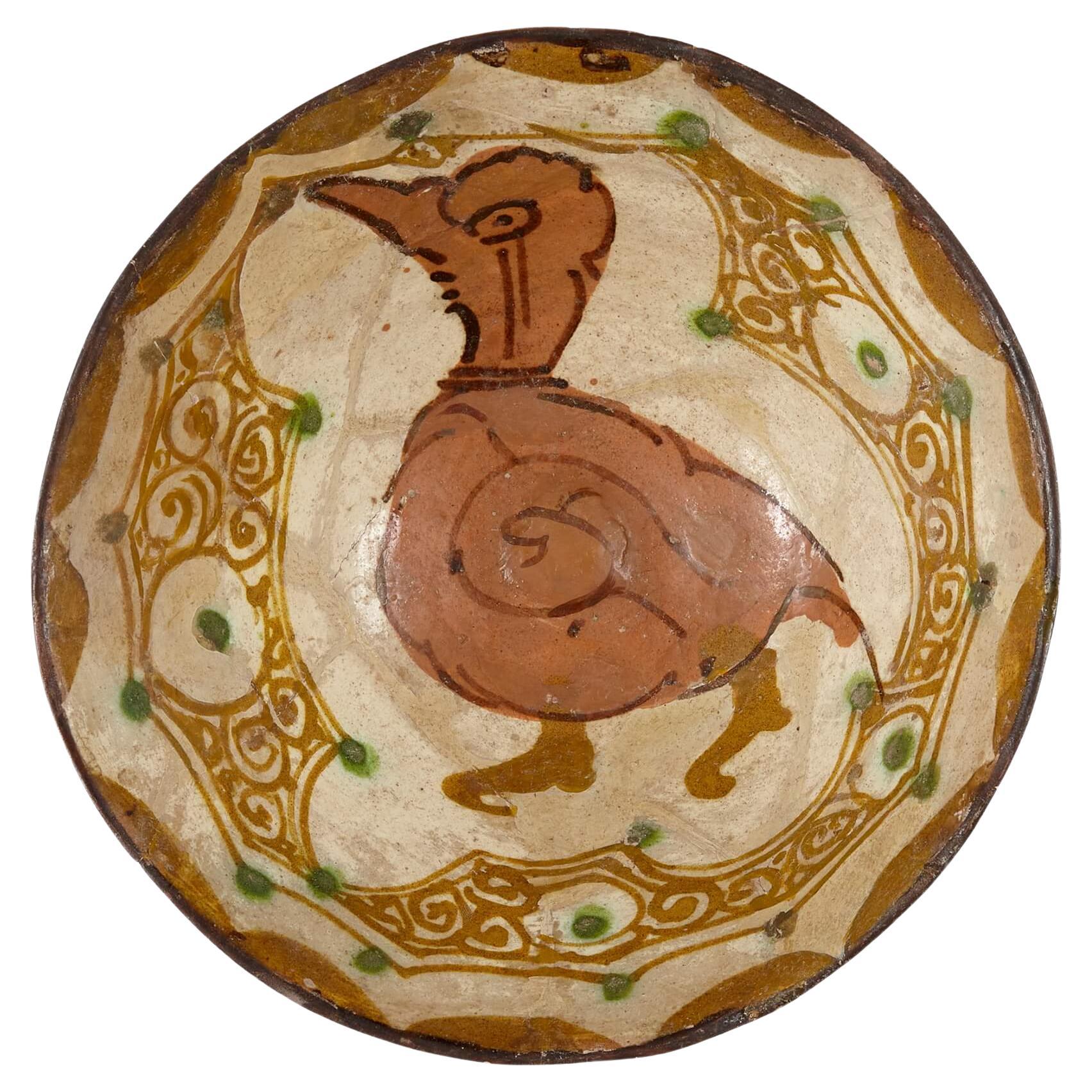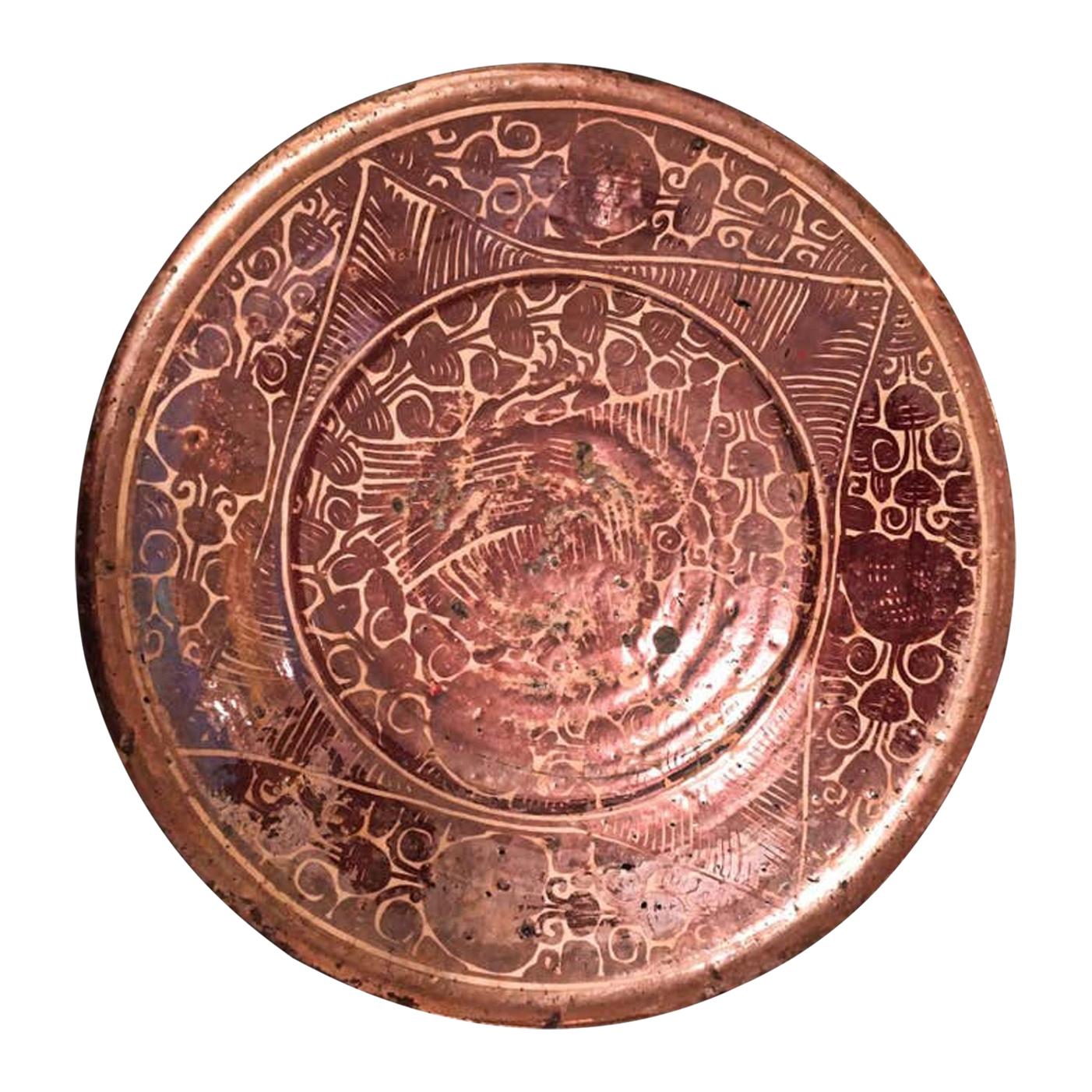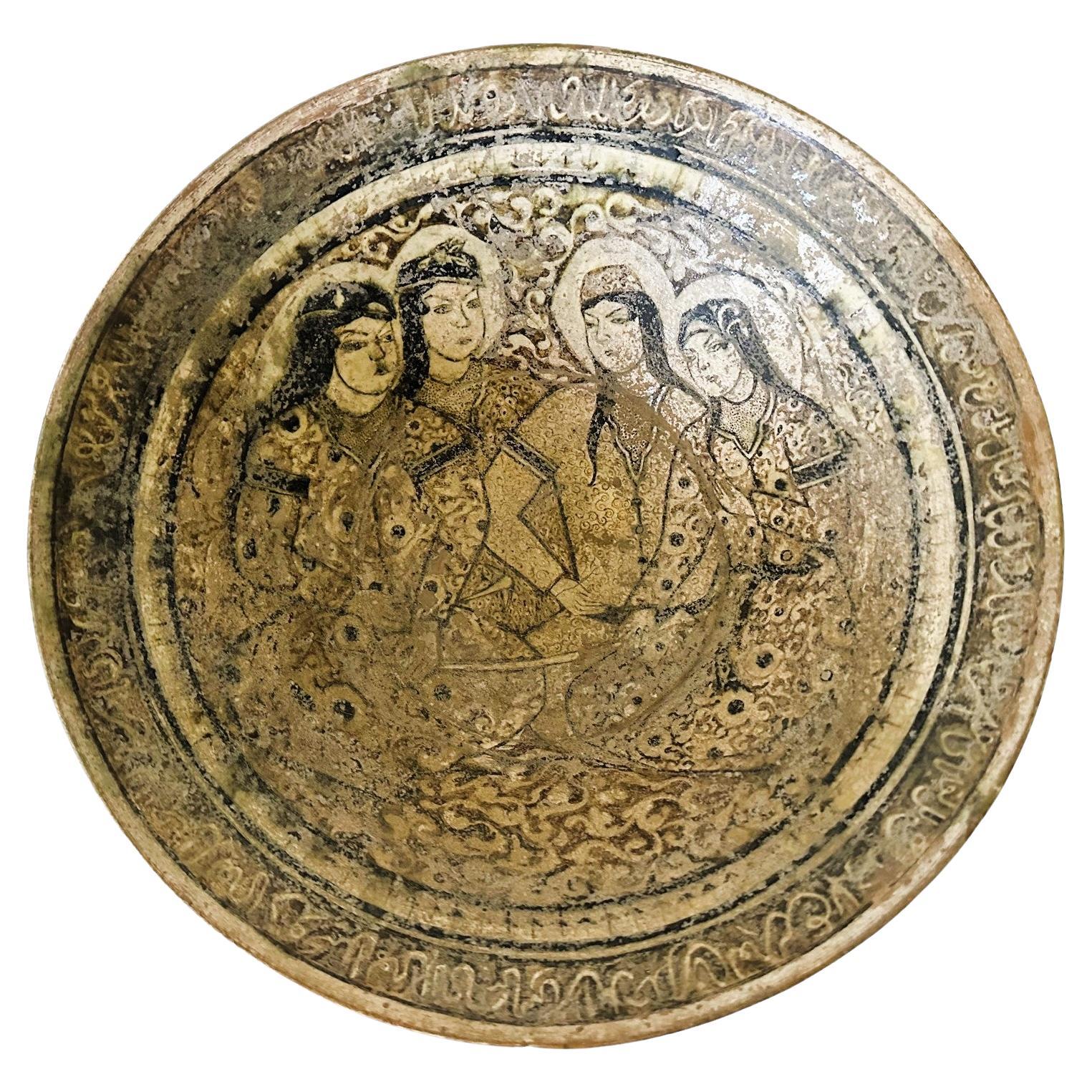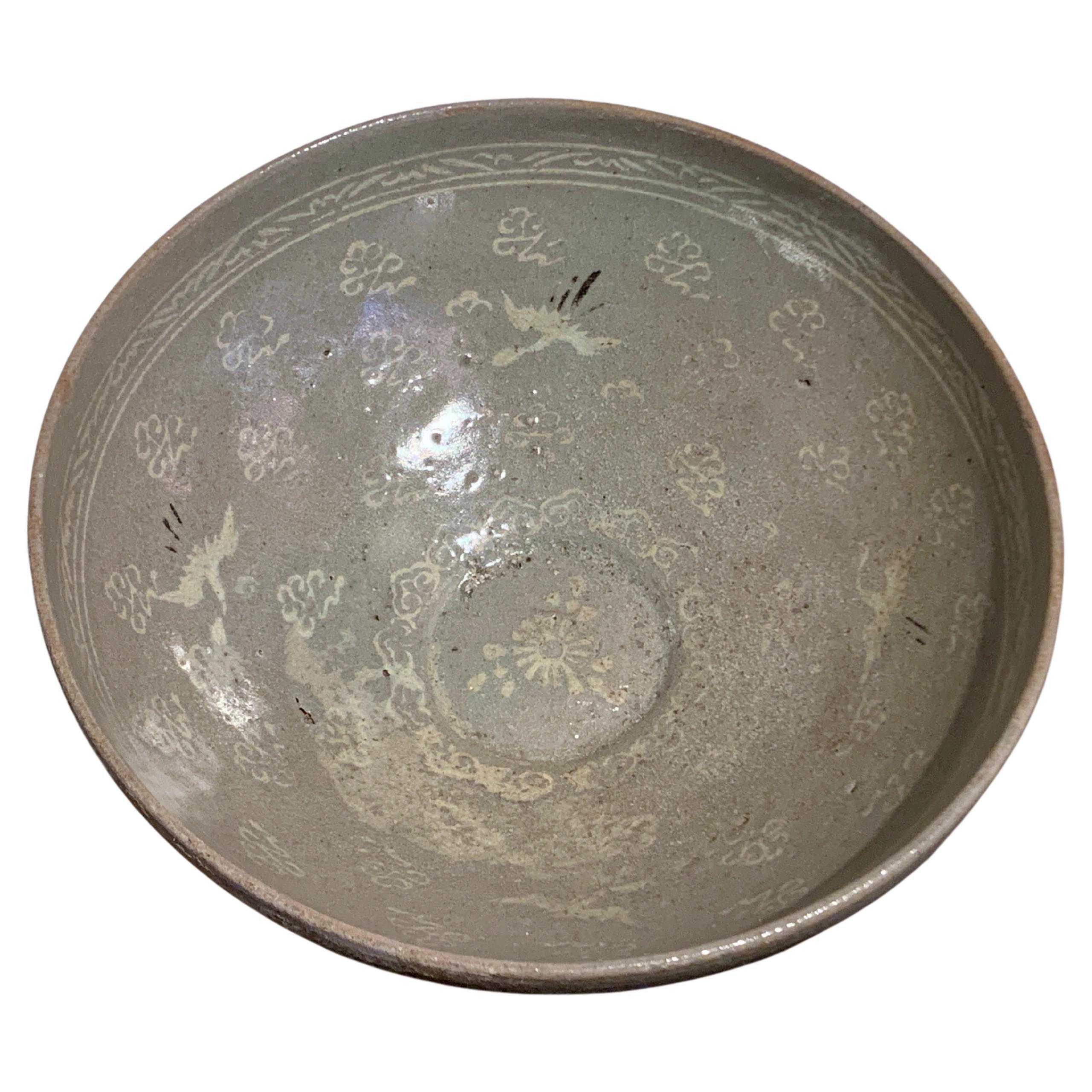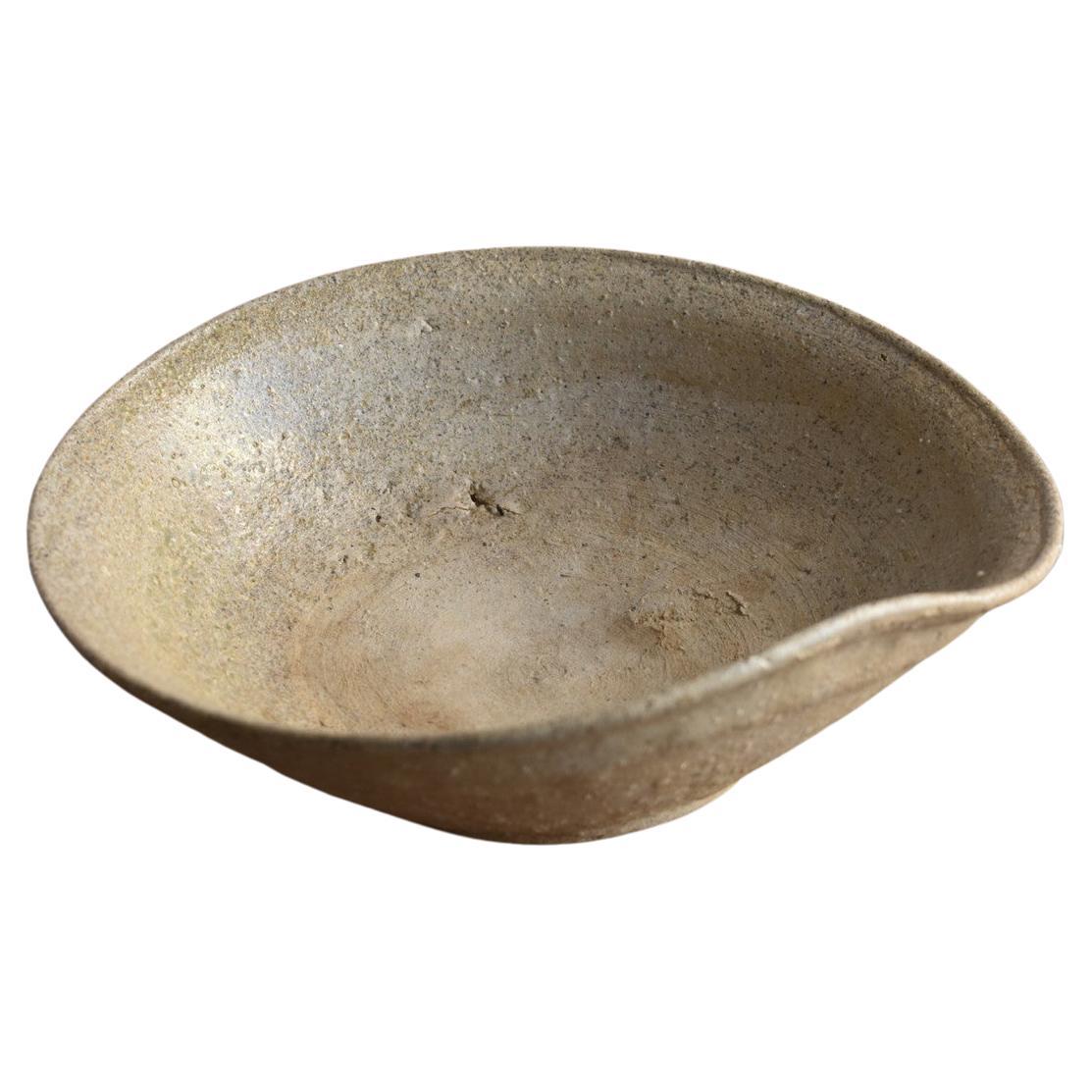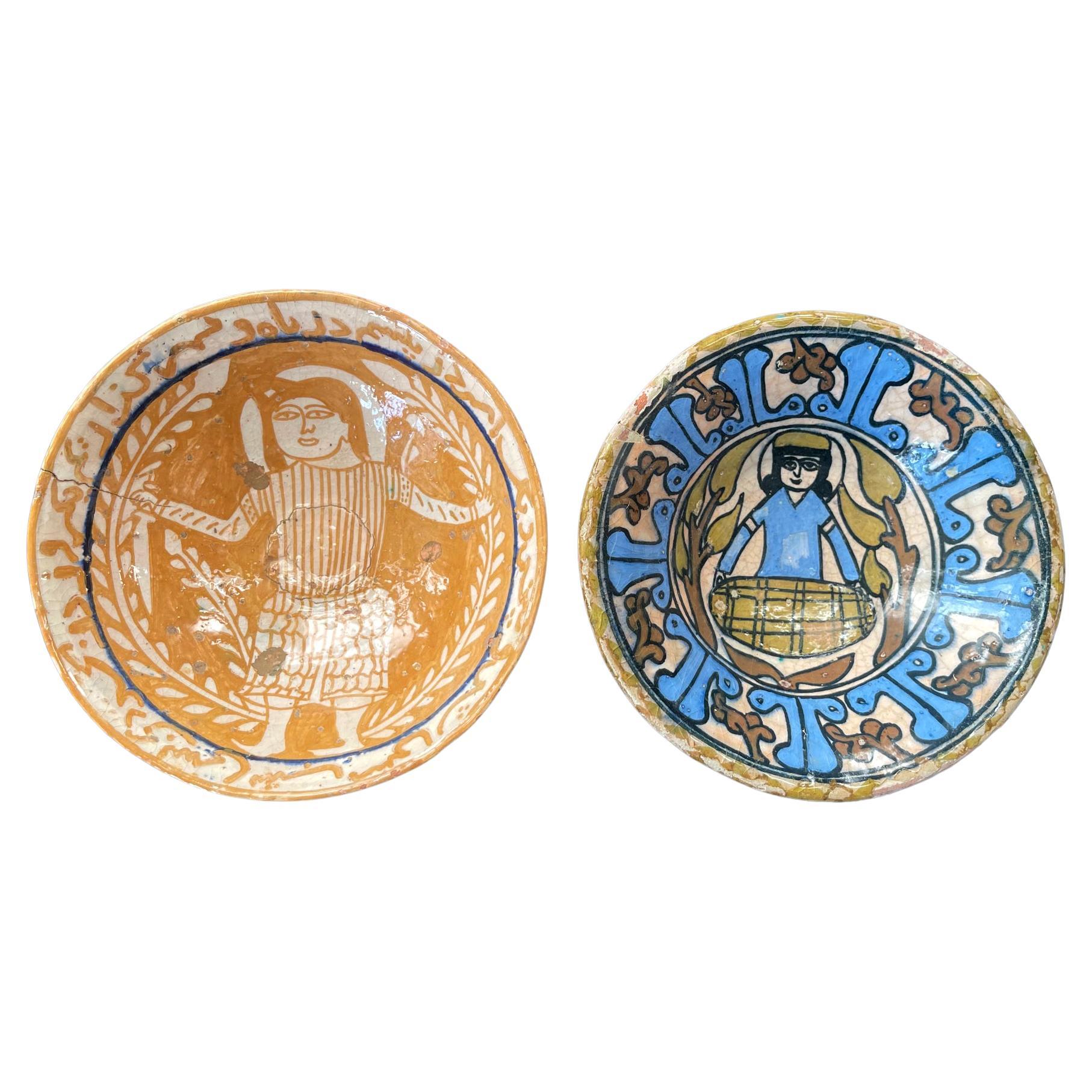Items Similar to Islamic Kashan 13th Century Turquoise Glazed Pottery Bowl
Video Loading
Want more images or videos?
Request additional images or videos from the seller
Islamic Kashan 13th Century Turquoise Glazed Pottery Bowl
About the Item
Antique Islamic Kashan Persian 13th century turquoise glazed pottery bowl.
This bowl with vertical foot has interior paint in brilliant turquoise glaze against black stylized palmettes. It is from the Kashan region. The bowl is in an almost untouched state with beautiful strong colors on the surface. This must be one of the earliest bowls decorated in underglaze painting technique.
The condition is good with a few places of missing glaze.
Measurements: Diameter 12” x height 4”
Weight 3 ½ lbs.
- Dimensions:Height: 4 in (10.16 cm)Diameter: 12 in (30.48 cm)
- Style:Kashan (Of the Period)
- Materials and Techniques:Pottery,Glazed
- Place of Origin:
- Period:
- Date of Manufacture:circa 13th Century
- Condition:Wear consistent with age and use.
- Seller Location:Vero Beach, FL
- Reference Number:1stDibs: LU3915322582262
About the Seller
4.8
Platinum Seller
These expertly vetted sellers are 1stDibs' most experienced sellers and are rated highest by our customers.
Established in 2018
1stDibs seller since 2018
183 sales on 1stDibs
Typical response time: <1 hour
- ShippingRetrieving quote...Ships From: Vero Beach, FL
- Return PolicyA return for this item may be initiated within 14 days of delivery.
More From This SellerView All
- Ancient Rare Kashan Lustre Bowl 12th Century Islamic Pottery ArtLocated in Vero Beach, FLAncient rare Kashan lustre bowl 12th century Islamic pottery art. This beautifully decorated and well cared for lustre bowl is one of the few examples still in existence. It was made in Kashan in the 12th-early 13th century, Seljuk- Atabeg period. Kashan was an important center for the production of high quality pottery and tiles. Lustre ware was among the most innovative development of Kashan potters, who mixed silver sulfides and copper oxides to create a shiny copper toned metallic sheen on the surface of glazed earthenware bowls, plates and vessels. It was an expensive and unpredictable lustre technique. Kashan lustreware pottery can be found in the collections of the British Museum and the Hermitage Museum. Literature: O. Pancaroglu. Perpetual Glory. Medieval Islamic Ceramics...Category
Antique 15th Century and Earlier Saudi Arabian Kashan Decorative Bowls
MaterialsPottery
- 17th Century Islamic Iznik Ceramic Pottery Kendi JugLocated in Vero Beach, FL17th century Islamic Iznik ceramic pottery Kendi jug This rare and precious antique Kendi jug is probably from the 17th century and it is excep...Category
Antique 17th Century Turkish Islamic Pottery
MaterialsCeramic
- 13th Century Period Wood Carved Polychrome Sculpture of Corpus ChristiLocated in Vero Beach, FL13th Century Period Wood Carved Polychrome Sculpture of Corpus Christi Rare and beautiful sculpture of Corpus Christi. The artwork, probably German, is carved from hardwood. This f...Category
Antique 15th Century and Earlier Unknown Medieval Religious Items
MaterialsHardwood, Paint
- 19th C. English Mason’s Ironstone Imari Style Deep Blue Bowl with Gilt FlowersLocated in Vero Beach, FL19th Century English Mason’s ironstone imari style deep blue bowl with gilt flower decoration. Superb ironstone bowl hand painted with bold e...Category
Antique 19th Century English Other Decorative Bowls
MaterialsIronstone
- Large Chinese Cloisonne Enamel Bowl, Qing DynastyLocated in Vero Beach, FLLarge Chinese Cloisonne enamel bowl, Qing Dynasty Exceptional and finely decorated Chinese cloisonne punch bowl with gilt metal foot and rim. The bowl has slightly flaring sides ...Category
Early 20th Century Chinese Qing Metalwork
MaterialsCopper, Enamel
- Meiji Period Large Japanese Imari Bowl CenterpieceBy Imari PorcelainLocated in Vero Beach, FLMeiji period large Japanese Imari bowl centerpiece This large, distinctive, octagonal porcelain Imari bowl is painted in rich, inky blue, co...Category
Antique 19th Century Japanese Meiji Ceramics
MaterialsPorcelain
You May Also Like
- Fine Kashan Pottery Ceramic Bowl, Persian, 13th CenturyLocated in London, GBA fine kashan pottery ceramic bowl Persian, 13th century Measures: Height 7.5cm, diameter 19cm Depicting a bird, this charming piece is an example ...Category
Antique 15th Century and Earlier Persian Kashan Ceramics
MaterialsCeramic
- Islamic Pottery Bowl with Figurative Paint Kashan WareLocated in Atlanta, GAAn earthenware bowl supported on a foot ring decorated with elaborate slip paint. The bowl was made in Kashan (in nowadays Iran) during 12-14th century, under Seljuk empire or after ...Category
Antique 15th Century and Earlier Persian Islamic Ceramics
MaterialsCeramic
- Korean Goryeo Celadon Glazed Sangam Inlaid Bowl, 12th/13th Century, KoreaLocated in Austin, TXA charming Korean celadon glazed stoneware bowl with white and black sangam inlay, Goryeo Dynasty, 12th - 13th century, Korea. The celadon glazed stoneware bowl of generous propor...Category
Antique 15th Century and Earlier Korean Ceramics
MaterialsStoneware
- Japanese Very Old Excavated Pottery Bowl / 12th-13th Century / Wabi Sabi ObjectLocated in Sammu-shi, ChibaThis is unglazed pottery made in Aichi Prefecture, Japan. The period is from the 12th century to the 13th century. This area has been producing high-quality tableware since around ...Category
Antique 15th Century and Earlier Japanese Other Decorative Bowls
MaterialsPottery
- Two Islamic Nishapur Glazed Pottery BowlsLocated in Atlanta, GAA collection of two small pottery bowls with polychrome central figurative decorations, matching size and similar conical form. These bowls are identified as Nishapur ware circa 10th century (in nowadays Iran). They were stoneware (possibly buffware) and covered with opaque white glaze. Both were lovely decorated with a central human figure within an outer border. One is predominantly yellow, an imitation of luster ware...Category
Antique 15th Century and Earlier Persian Islamic Ceramics
MaterialsCeramic
- Exquisite 13th Century Rock Crystal and Gold Bowl in Superb ConditionLocated in London, GBRock crystal vessels were highly demanded and valuable in Medieval times. Inventories from European royal houses and the highest aristocratic families detail the important and sophisticated collections of ewers and bowls. Rock crystal has also been used extensively in religious art. Fine European reliquaries were also made of Rock Crystal including gems, enamel and other precious materials. The work of rock crystal is very ancient. The materials has been worked and valued for its solidity and its purity: it has been believed to be water ice permanently frozen. Our superb example is a gold-mounted rock crystal bowl with enamel. The items origin is not clear and various features and characteristics may lead us to think of different origins and periods of creation. A single piece of stone mounted with gold could be a Milanese work. Although the cut could be French as similar pieces belonged to the French royalty (especially the art lover Duc de Berry, (1340-1416)). French and Italian crystal cutters have been active at the same time and it is often difficult to differentiate their works. Islamic art also influenced European artists. The famous Fatimid treasury provided examples of their sophistication and quality. The seven ewers carved for the Fatimid Imans (known as "The Magnificent Seven") display impressive quality of both rock crystal and enamelled mounts. Even though not identical to works by French silversmith Jean-Valentin Morel who was appointed goldsmith to Queen Victoria in 1852 or Reinhold Vasters (1927-1909) another renown German goldsmith who embellished older rock crystal items, there are similarities between these works. Both reduce their use of colour to black and white on pure gold mounts. Moreover the black enamel design is quite similar. Also, no gems are included and no human figure is represented. Sotherby's described our bowl as a "German Rock crystal bowl with later gold mounts, 15th century." Other items from the period from Germany or Austria are usually silver mounted and the decorations are more colourful and include gems or human figures but they have in common enamel motifs. In our case, the gold foot, handles and rim could date from the 1900s. An expert has established the foot, handles and rim are pure gold. The goldsmith responsible for the improvement of the bowl is possibly the most famous Reinhold Vasters whose work has been displayed in the greatest museums such as the V&A in London and the Metropolitan Museum of Art in New York. The Rock Crystal bowl we have is gold mounted. The gold shows in enamelled details that are black and white. The gold handles are also enamelled with black acanthus-like leaves. The enamelling method could be "champleve" or "painting metal". The metal that is usually preferred is copper but these techniques are also applied to gold. The bowl itself could be from the 14th century. It's cut reminds of an estimated 14th century rock crystal ball bearing the Buoncompagni family arms...Category
Antique 15th Century and Earlier Italian Decorative Bowls
MaterialsRock Crystal
Recently Viewed
View AllMore Ways To Browse
Glazed Pottery
Antique Glazed Pottery
Antique Glaze On Painted Furniture
Turquoise Antique Furniture
Antique Turquoise Furniture
Turquoise Glazed
Antique Hall Pottery
Hall Antique Pottery
Islamic Antique
Antique Islam
Antique Islamic
12 Bowls
Islamic Antiques
Antique Islamic Furniture
Early Islamic
Antique Glaze Colors
13th Century Furniture
Turquoise Pottery
